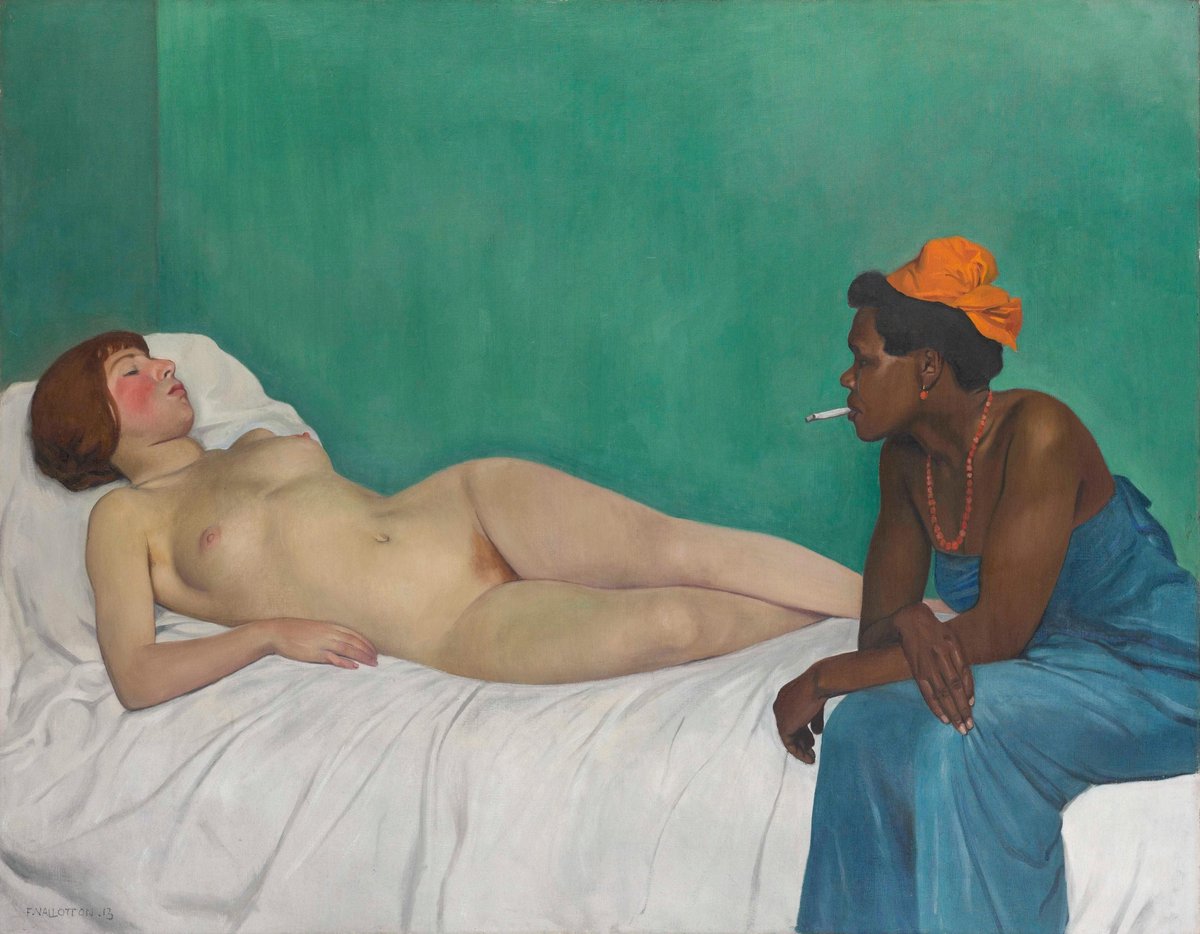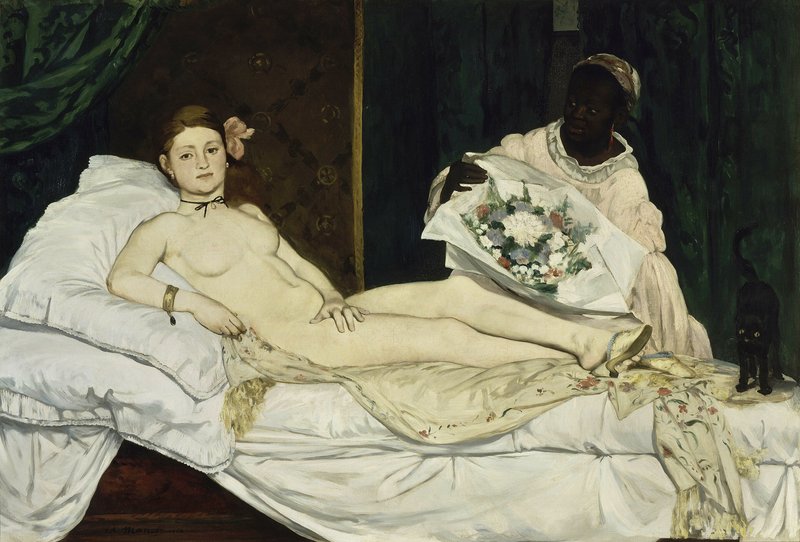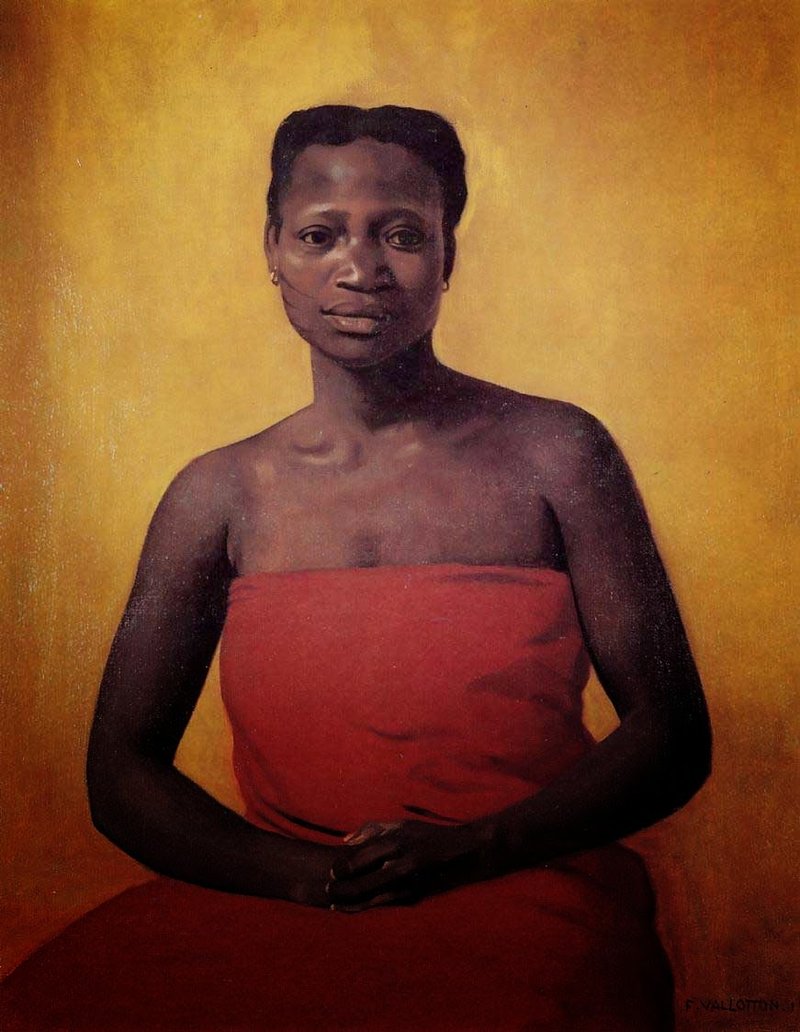Vallotton – La Blanche et la Noire

Félix Vallotton, La Blanche et la Noire, 1913
Kunst Museum Winterthur, Hahnloser/Jaeggli Stiftung
Foto: Reto Pedrini, Zürich
This monumental painting is one of the major works in Vallotton's oeuvre and is one of his most complex, even enigmatic. It belongs to a group of four large-format works with which the Hahnloser collectors demonstrated their commitment to Vallotton's painting, which was considered problematic at the time even among open-minded art lovers at the time.

Édouard Manet, Olympia, 1863
Musée d'Orsay, Paris
There is a clear model that was the inspiration for this painting and to which Vallotton explicitly referred: Édouard Manet's Olympia from 1863, which now hangs in the Musée d'Orsay in Paris. There is also a naked white woman lying in a similar pose on a bed covered with a white sheet, at the end of which is a black woman. In Manet's work, the black woman is a servant handing over a bouquet of flowers from an admirer, because – as everyone knew at the time – Olympia was a prostitute.
Of course, it was a scandal to depict a lady of the demimonde in such a large painting, and in a pose that goes back to a long, venerable tradition. Manet – and Vallotton with him – referred to famous paintings by Giorgione and Titian, whose nudes depicted noble goddesses. Just as ancient sculptures were often unclothed, nudity was permitted only in the depiction of women detached from the real world. Accordingly, there is never any pubic hair in these paintings – unlike in Vallotton's work.
What Vallotton also changed was the role of the black woman. Although it is quite conceivable that she too is a servant, her self-confident pose and her position on the bed instead of behind it speak a different language. Moreover, unlike the reclining woman, she is clothed and – a crucial detail – she is smoking. Cigarettes were fashionable then in trendy Parisian society at the time, and this woman sits at the edge of the bed with equal self-assurance.

Félix Vallotton, Femme noire assise de face, 1911
Privat collection
Since 1905, Vallotton turned increasingly to the nude as a subject, also creating several portraits of black women. His model for La Blanche et la Noire appears in several paintings – but in none of them in such a tense constellation as there. Her gaze is directed towards the unclothed woman, although it is not clear whether the latter is sleeping or returning the gaze of her counterpart from under her eyelids. The relationship between the two remains unclear, and we are free to speculate about how they are connected. The reddened cheeks of the reclining woman might provide a clue, but it is ultimately up to the viewer to decide in which direction the scene should be interpreted.


